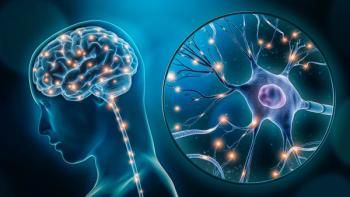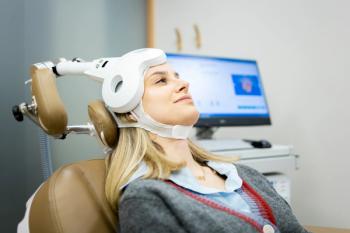
- Psychiatric Times Vol 24 No 7
- Volume 24
- Issue 7
Trauma and the Mind-Body Connection
Traumatic experiences are linked with a continuum of mental disorders and physical complaints. In the United States, posttraumatic stress disorder (PTSD) occurs in approximately 8% of adults during their lifetime, with different trauma types associated with varying rates of illness. PTSD is commonly associated with comorbid mental conditions such as depressive disorders, other anxiety disorders, impulse control disorders, and alcohol abuse.
Traumatic experiences are linked with a continuum of mental disorders and physical complaints. In the United States, posttraumatic stress disorder (PTSD) occurs in approximately 8% of adults during their lifetime, with different trauma types associated with varying rates of illness.1,2 PTSD is commonly associated with comorbid mental conditions such as depressive disorders, other anxiety disorders, impulse control disorders, and alcohol abuse.2 In addition, trauma survivors often experience physiological changes, onset and exacerbation of medical conditions, unexplained medical symptoms and, less commonly, somatization disorder and other somatoform disorders.
Some comorbid disorders predate trauma and are associated with increased risk for PTSD and some begin after trauma exposure.3,4 Several of the 3 core symptom clusters of PTSD- re-experiencing, avoidance/numbing, and hyperarousal-may overlap symptoms of major depression. Among the avoidance symptoms in PTSD, diminished interest or participation in activities, restricted affect, and emotional detachment may merge with anhedonic depressive symptoms. The increased arousal symptoms seen with PTSD, including sleep difficulties, irritability, and poor concentration are also characteristic of depression.
Major depression often follows exposure to trauma. In fact, depression is the second most common psychiatric disorder diagnosed by North and colleagues5 in highly exposed survivors of the bombing in Oklahoma City 6 months posttrauma. Perkonigg and colleagues4 noted that in a young German community sample with and without comorbid PTSD, depression commonly occurred after trauma. After a terrorist bombing in Nairobi, depression both predated and occurred after the disaster in highly exposed survivors, second only to PTSD postbombing.6
Somatization disorder and unexplained physical symptoms
Somatization disorder (a type of somatoform disorder) is less commonly diagnosed in the general population, occurring in up to 2% of women in the United States and less than 0.2% of men, according to DSM-IV-TR. A history of chronic pain and GI, sexual, and pseudoneurological symptoms for which there are no identifiable medical causes are the DSM diagnostic criteria for somatization disorder. This condition has been associated with elevated depressive, manic, and anxiety symptoms.7 Moreover, among the diagnostic criteria for somatization disorder, dissociation may also occur in PTSD, and lack of sexual interest is common with major depression. Studies of individuals with trauma histories vary in their reports of somatization disorder, somatic symptoms, and unexplained medical symptoms, with fully diagnosed somatization disorder being less common.
North8 discussed the need for methodological precision in assessing these issues among disaster survivors. Her group noted no cases of somatization disorder in terrorism survivors 6 months postdisaster.5 Similarly, no so- matization disorder was seen in flood survivors, who had few new somatoform symptoms, although PTSD and comorbid depression were diagnosed.9 Carey and colleagues10 assessed predominantly poor, single South African females in a primary care setting, who had a high rate of lifetime trauma exposure (94%, n = 189). In this specialized sample, somatization disorder was common (18.4%), and PTSD had high comorbidity with somatization disorder (35%; P < .01).
The previously mentioned German sample experienced lower rates of lifetime trauma (21.4%) and an adjusted hazard ratio for any somatoform disorder of 3.85 after traumatic experiences, and of 2.51 in traumatized individuals with earlier PTSD, controlling for trauma characteristics.4 The assessment by de Jong and coworkers11 of civilians from postconflict communities in Algeria, Cambodia, Ethiopia, and Palestine reported a significant risk ratio (4.07) for somatoform disorder only in the Palestinian group.
Medically unexplained physical symptoms commonly present in primary care settings and account for a high percentage of disability in the workforce. Symptoms often do not reach the threshold for diagnosis of somatization disorder or other somatoform disorders and can also involve medical syndromes with actual physical findings. Emotional underpinnings have been noted in these conditions. The results of a recent meta-analysis by Henningsen and colleagues12 indicated that 4 somatic syndromes (irritable bowel syndrome, nonulcer dyspepsia, fibromyalgia, and chronic fatigue syndrome) were related to but not fully dependent on depression and anxiety. Findings from another study showed that medically unexplained symptoms were more often associated with depression and anxiety than with somatoform disorders.13
Gupta14 reviewed unexplained cutaneous sensory syndromes as "body memories" of traumatic experiences in PTSD; he focused on the skin as the primary organ of early attachment and communication throughout life that is vulnerable to somatization. The connection between early childhood trauma and somatization has been noted by several groups,15-17 including Heim and colleagues,18 who saw an association of childhood abuse and the somatic condition, chronic fatigue syndrome. Similarly, Waldinger and associates19 found that childhood trauma was associated with higher levels of somatization and insecure attachment in adults. Unexplained medical symptoms after terrorism and war have also been noted in historical and epidemiological accounts.20-22
Resultant physiological changes
Complicating the treatment of traumatized patients, many individuals in whom PTSD develops have measur-able physiological differences compared with individuals without the disorder. These include dysregulation of the hypothalamic-pituitary-adrenal axis,23 altered immunological measures,24,25 differences in brain structure and function,23 and physiological reactivity to trauma reminders.26 Autonomic reactivity may be a consequence of exposure to trauma that is independent of PTSD diagnosis; healthy survivors of terrorism were shown to have higher basal heart rate and heightened autonomic reactivity to trauma reminders than controls many years later, regardless of whether they had PTSD.27 Thus, the question arises: are traumatized individuals with changes in their physiological steady state more aware of internal physical cues that contribute to somatic complaints?
Moreover, do the lasting biological changes noted after trauma contribute to the development of actual medical problems? Veterans with PTSD, especially those with childhood and other trauma, have been shown to have greater medical care utilization.28,29 Shariat and colleagues30 noted that up to one third of the survivors of the Oklahoma City bombing reported a worsening of medical conditions 1.5 to 3 years later. Chronic combat PTSD, especially comorbid or complex PTSD, has been associated with a high rate of autoimmune diseases, including rheumatoid arthritis, psoriasis, insulin-dependent diabetes, and thyroid diseases. Boscarino31 proposed that biological mediators of these conditions may be associated clinically with higher T-cell counts, hyperreactive immune responses on delayed cutaneous hypersensitivity tests, higher IgM levels, and lower dehydroepiandrosterone levels. Veterans with PTSD have been noted in some studies to have more medical problems, including the metabolic syndrome.32
Cardiovascular morbidity in particular has been noted among veterans with PTSD.33 A large prospective study demonstrated an association between PTSD symptoms and coronary heart disease after controlling for depressive symptoms.34 Chronic sympathetic arousal arising from anxiety may contribute to the progression of coronary heart disease through reduced heart rate variability; increased sympathetic and decreased parasympathetic activity are linked to ventricular arrhythmias and sudden death. PTSD has been associated with a greater risk for cardiovascular disease, atrioventricular conduction defects on ECG, and infarctions, while depression has been associated with arrhythmias.35
Although PTSD and depression are often comorbid, their pathophysiology may differ.36 While both are associated with increased levels of corticotropin-releasing factor, PTSD is characterized more by low cortisol levels, whereas depression is characterized more by high levels of cortisol. Cardiac outcome would be most favorable with treatment that targets not only depression but also core PTSD symptoms.37 Patients with PTSD are likely to not adhere to medical treatments38; both treating psychiatrists and primary care physicians caring for patients with cardiac problems must address this problem.39
Diagnosis and treatment
How then can we best help traumatized patients who may present with complex and varying patterns of PTSD, depression, physiological changes, unexplained medical symptoms, and primary medical problems? All patients with psychiatric symptoms, regardless of age or presenting problems, should be asked about past and ongoing trauma. Trauma exposure should be explored over time, even if denied on initial assessment, because patients may not reveal trauma until a trusting bond is established with the clinician. Psychiatrists should consider possible trauma in patients with patterns of anxiety, substance abuse, depression, and unexplained medical complaints. Patients with histories of trauma who present with somatic complaints should be referred to a primary care physician to detect undiagnosed medical problems that may be worsened by ongoing stress. After a thorough medical evaluation, unexplained physical symptoms and subclinical somatization disorder may respond to psychiatric treatments found effective in diagnosed somatization disorder.
Depression following trauma should be managed with evidence-based treatments such as those recommended by the American Psychiatric Association Practice Guidelines.40 The treatment of choice for moderate to severe episodes is antidepressants (or electroconvulsive therapy [ECT]) with antipsychotics added as needed. Psychotherapy alone is recommended in mild to moderate depression if preferred by the patient, or in combination with medication. For moderate to severe depression, psychotherapy may be combined with medication or ECT. Combined antidepressant treatment and psychotherapy may also help depression complicated by a personality disorder or significant psychosocial issues such as past or ongoing trauma or interpersonal problems.
Patient preference and clinician expertise should be taken into account when deciding on psychotherapeutic methods, with choices among cognitive-behavioral, interpersonal, and psychodynamic therapies. Psychodynamic therapy may benefit depression following early childhood trauma and may be especially helpful with personality disorders, problematic adult relationships, and trust issues.
Core symptom clusters of PTSD may respond to many of the same medications that are effective in depression. Moreover, these same antidepressants treat common comorbid conditions such as mood and other anxiety disorders. SSRIs are considered first-line medication treatments for PTSD and they are well tolerated.40 Tricyclic antidepressants and monoamine oxidase inhibitors may also help, with a norepinephrine-serotonin reuptake inhibitor also of potential benefit.41 In addition, anticonvulsants, atypical antipsychotics, α2-adrenergic agonists, and ß-adrenergic blockers as monotherapy or adjunctive therapy may improve symptoms.40 Various forms of cognitive and behavioral psychotherapies can desensitize patients to trauma memories and environmental triggers, with demonstrated efficacy in treating PTSD.40 Empirically supported treatments include exposure therapy42 as well as cognitive therapy,43 interpersonal psychotherapy,44 and prolonged exposure therapy.45,46 Stress inoculation and trauma-focused group therapies may also be useful.40
Formal guidelines for treating somatization disorder are lacking, although successful treatment with cognitive- behavioral therapy (CBT) has been demonstrated.47,48 In a randomized controlled trial of CBT compared with standard medical care and psychiatric consultation, findings showed significant improvement with CBT in somatization disorder, self-reported functioning, and somatic symptoms, with reduced health care costs.48 Mai49 suggests that CBT sessions have realistic treatment goals; foster coping with symptoms and limitations; and promote recreation, relaxation, and a sense of control and autonomy. It is also important to develop a treatment strategy for individuals with trauma histories who have many somatic complaints but who do not meet full criteria for somatization disorder. Walker and associates50 discussed a model for treating patients with multiple medically unexplained symptoms. This model minimizes referral to specialists and encourages clinicians to remain self-aware and to process common feelings of anger and resentment.
Keeping in mind that patients who have been traumatized may somatize to express psychic pain and to elicit a nurturing response in caretakers may help modulate physicians' countertransference, which is often born of frustration. Comprehensive treatment includes patient education, use of psychiatric consultants, and treatment of psychiatric illness and primary medical problems. Just as with somatization disorder, the patient with medically unexplained symptoms should be encouraged to develop stress management skills, social supports, and healthy behaviors. Medications for comorbid anxiety and mood disorders are indicated as described above, while avoiding medications with potential for abuse or dependence.
The following case illustrates successful use of a combination of support, drug therapy, and psychotherapy for a trauma survivor, provided by a primary care physician in cooperation with a psychiatrist.
CASE VIGNETTE
Edna H, a 35-year-old disabled woman, presented for psychiatric care in 1999, 4 years after suffering loss of hearing in one ear and soft tissue injuries in the Oklahoma City bombing. Edna had a history of childhood physical abuse and neglect and reported an episode of mild, untreated depression in her 20s. In addition to having avoided treatment for bombing-related PTSD, major depression, and panic disorder, Edna had not followed up regularly with her primary care physician for preexisting polycystic ovary syndrome, borderline diabetes mellitus, and hypertension, as well as new-onset nonmigraine headaches and unexplained musculoskeletal pain. She believed that her primary care physician did not care about her and he reminded her of her abusing parent. She was referred to an internist whose medical practice included many patients with mental disorders and lifetime histories of trauma. After a protracted time during which trust was repeatedly tested and finally established with her psychiatrist and internist, she began to comply with treatments prescribed by both.
Edna experienced gradual improvement in her PTSD and depression with an SSRI and multimodal psychotherapy. At first a supportive approach built trust and improved stress management skills and socialization. Eventually, therapy combined a psychodynamic approach (exploring past abuse and ensuing trust issues triggered by terrorism and troubled relationships) with a cognitive-behavioral paradigm (identifying and reshaping automatic negative expectations of repeated traumatization as more positive relationships and goals were attained.) Her primary care physician medically managed her diabetes, hypertension, and polycystic ovary syndrome, and encouraged a diet and exercise program designed by Edna to enhance her sense of personal control. Musculoskeletal pain was evaluated but not found to have a medical cause. Edna recognized that her pain was often linked to stress related to trauma reminders and life frustrations. The primary care physician scheduled visits at regular intervals to reinforce health-promoting behaviors and did not refer her to specialists for unsubstantiated physical complaints. Although she did not return to work, Edna reported satisfaction in joining several charitable organizations, making lasting friendships, and pursuing a new hobby of photography.
References:
References
1.
Kessler RC, Sonnega A, Bromet E, et al. Posttraumatic stress disorder in the national comorbidity survey.
Arch Gen Psychiatry
. 1995;52:1048-1060.
2.
Breslau N, Kessler RC, Chilcoat HD, et al. Trauma and posttraumatic stress disorder in the community: the 1996 Detroit area survey of trauma.
Arch Gen Psychiatry
. 1998;55:626-632.
3.
Kessler RD, Chiu WT, Dernier O, Walters EE. Prevalence, severity and comorbidity of 12-month
DSM-IV
disorders in the National Comorbidity Survey replication.
Arch Gen Psychiatry
. 2005;62:617-627.
4.
Perkonigg A, Kessler RC, Storz S, Wittchen HU. Traumatic events and post-traumatic events and post-traumatic stress disorder in the community: prevalence, risk factors and comorbidity.
Acta Psychiatr Scand
. 2000; 101:46-59.
5.
North CS, Nixon SJ, Shariat S, et al. Psychiatric disorders among survivors of the Oklahoma City bombing.
JAMA.
1999;282:755-762.
6.
North CS, Pfefferbaum B, Narayanan P, et al. Comparison of post-disaster psychiatric disorders after terrorist bombings in Nairobi and Oklahoma City.
Br J Psychiatry
. 2005;186:487-493.
7.
Lenze EJ, Miller AR, Munir ZB, et al. Psychiatric symptoms endorsed by somatization disorder patients in a psychiatric clinic.
Ann Clin Psychiatry
. 1999;11:73-79.
8.
North CS. Somatization in survivors of catastrophic trauma: a methodological review.
Environ Health Perspect
. 2002;110:637-640.
9.
North CS, Kawasaki A, Spitznagel EL, et al. The course of PTSD, major depression, substance abuse and somatization after a natural disaster.
J Nerv Ment Dis
. 2004;192:823-829.
10.
Carey PD, Stein D, Zungu-Dirwayi N, et al. Trauma and posttraumatic stress disorder in an urban Xhosa primary care population: prevalence, comorbidity and service use patterns.
J Nerv Ment Dis
. 2003;191:230-236.
11.
de Jong JTV, Komproe IH, Ommeren MV. Common mental disorders in postconflict settings.
Lancet
. 2003; 361:2128-2130.
12.
Henningsen P, Zimmermann T, Sattel H. Medically unexplained physical symptoms, anxiety, and depression: a meta-analytic review.
Psychosom Med
. 2003;65: 528-533.
13.
Smith RC, Gardiner JC, Lyles JS, et al. Exploration of
DSM-IV
criteria in primary care patients with medical- ly unexplained symptoms.
Psychosom Med
. 2005;67: 123-129.
14.
Gupta MA. Somatization disorders in dermatology.
Int Rev Psychiatry
. 2006;18:41-47.
15.
Tull MT, Gratz KL, Salters K, et al. The role of experiential avoidance in posttraumatic stress symptoms and symptoms of depression, anxiety and somatization.
J Nerv Ment Dis
. 2004;192:754-761.
16.
van der Kolk BA, Pelcovitz D, Roth S, et al. Dissociation, somatization and affect dysregulation: the complexity of adaptation to trauma.
Am J Psychiatry
. 1996; 153:83-93.
17.
McLean LM, Toner B, Jackson J, et al. The relationship between childhood sexual abuse, complex post-traumatic stress disorder and alexithymia in two outpatient samples: examination of women treated in community and institutional clinics.
J Child Sex Abuse
. 2006;15:1-17.
18.
Heim C, Wagner D, Maloney E, et al. Early adverse experience and risk for chronic fatigue syndrome: results from a population-based study.
Arch Gen Psychiatry
. 2006;63:1258-1266.
19.
Waldinger RJ, Schulz MS, Barsky AJ, et al. Mapping the road from childhood trauma to adult somatization: the role of attachment.
Psychosom Med
. 2006;68:129-135.
20.
Clauw DJ, Engel CC Jr, Aronowitz R, et al. Unexplained symptoms after terrorism and war: an expert consensus statement.
J Occup Environ Med
. 2003; 45:1040-1048.
21.
Hoge CW, Terhakopian A, Castro CA, et al. Association of posttraumatic stress disorder with somatic symptoms, health care visits and absenteeism among Iraq war veterans.
Am J Psychiatry.
2007;164:150-153.
22.
Hassett AL, Sigal LH. Unforeseen consequences of terrorism: medically unexplained symptoms in a time of fear.
Arch Intern Med
. 2002;162:1809-1813.
23.
Nemeroff CB, Bremner JD, Foa EB, et al. Posttraumatic stress disorder: a state-of-the-science review.
J Psychiatr Res
. 2006;40:1-21.
24.
Baker DG, Ekhator NN, Kasckow JW, et al. Plasma and cerebrospinal fluid interleukin-6 concentrations in posttraumatic stress disorder.
Neuroimmunomodulation.
2001;9:209-217.
25.
Altemus M, Cloitre M, Dhabhar FS. Enhanced cellular immune response in women with PTSD related to childhood abuse.
Am J Psychiatry
. 2003;160:1705-1707.
26.
Pitman RK, Orr SP, Forgue DF, et al. Psychophysiological assessment of posttraumatic stress disorder imagery in Vietnam combat veterans.
Arch Gen Psychiatry.
1987;44:970-975.
27.
Tucker PM, Pfefferbaum B, North CS, et al. Physiologic reactivity despite emotional resilience several years after direct exposure to terrorism.
Am J Psychiatry
. 2007;164:230-235.
28.
Richardson JD, Elhai JD, Pedlar DJ. Association of PTSD and depression with medical and specialist care utilization in modern peacekeeping veterans in Canada with health-related disabilities.
J Clin Psychiatry
. 2006; 67:1240-1245.
29.
Clancy CP, Graybeal A, Tompson WP. Lifetime trauma exposure in veterans with military-related posttraumatic stress disorder: association with current symptomatology.
J Clin Psychiatry
. 2006;67:1346-1353.
30.
Shariat S, Mallonee S, Kruger E, et al. A prospective study of long-term health outcomes among Oklahoma City bombing survivors.
J Okla State Assoc
. 1999;92: 178-186.
31.
Boscarino JA. Posttraumatic stress disorder and physical illness: results from clinical and epidemiologic studies.
Ann N Y Acad Sci
. 2004;1032:141-153.
32.
Jakovljevi M, Sari M, Nad S, et al. Metabolic syndrome, somatic and psychiatric comorbidity in war veterans with post-traumatic stress disorder: preliminary findings.
Psychiatr Danub
. 2006;18:169-176.
33.
Kang HK, Bullman TA, Taylor JW. Risk of selected cardiovascular diseases and posttraumatic stress disorder among former World War II prisoners of war.
Ann Epidemiol.
2006;16:381-386.
34.
Kubzansky LD, Koenen KC, Spiro A, et al. Prospective study of posttraumatic stress disorder symptoms and coronary heart disease in the normative aging study.
Arch Gen Psychiatry
. 2007;64:109-116.
35.
Boscarino JA, Chang J. Electrocardiogram abnormalities among men with stress-related psychiatric disorders: implications for coronary heart disease and clinical research.
Ann Behav Med
. 1999;21:227-234.
36.
Spindler H, Pederson SS. Posttraumatic stress disorder in the wake of heart disease: prevalence, risk factors, and future research directions.
Psychosom Med
. 2005; 67:715-723.
37.
Shemesh E, Yehuda R, Milo O. Posttraumatic stress, nonadherence, and adverse outcome in survivors of a myocardial infarction.
Psychosom Med
. 2004;66: 521-526.
38.
Doerfler LA, Paraskos JA. Anxiety, posttraumatic stress disorder, and depression in patients with coronary heart disease: a practical review for cardiac rehabili- tation professionals.
J Cardiopulm Rehabil
. 2004;24: 414-421.
39.
Treating Major Depressive Disorder: A Quick Reference Guide. Based on Practice Guideline for the Treatment of Patients With Major Depressive Disorder
. 2nd ed. Arlington, Va: American Psychiatric Association; 2000.
40.
Treating Patients With Acute Stress Disorder and Posttraumatic Stress Disorder: A Quick Reference Guide. Based on Practice Guideline for the Treatment of Patients With Acute Stress Disorder and Posttraumatic Stress Disorder
. Arlington, Va: American Psychiatric Association; 2004.
41.
Davidson J, Rothbaum B, Tucker P, et al. Venlafaxine extended release in posttraumatic stress disorder: a sertraline and placebo-controlled study.
J Clin Psychopharm
. 2006;26:259-267.
42.
Foa EB, Keane TM, Friedman MJ, eds.
Effective Treatments for PTSD: Practice Guidelines from the International Society for Traumatic Stress Studies
. New York: Guilford Press; 2000.
43.
Resick PA, Nishith P, Weaver TL, et al. A comparison of cognitive-processing therapy with prolonged exposure and a waiting condition for the treatment of chronic posttraumatic stress disorder in female rape victims.
J Consulting Clin Psychol
. 2002;70:867-879.
44.
Bleiberg KL, Markowitz JC. A pilot study of interpersonal psychotherapy for posttraumatic stress disorder.
Am J Psychiatry
. 2005;162:181-183.
45.
Marks I, Lovell K, Noshirvani H, et al. Treatment of posttraumatic stress disorder by exposure and/or cognitive restructuring: a controlled study.
Arch Gen Psychiatry
. 1998;55:317-325.
46.
Foa EB, Rothbaum BO.
Treating the Trauma of Rape
. New York: Guilford Press; 1998.
47.
Lidbeck J. Group therapy for somatization disorders in primary care: maintenance of treatment goals of short cognitive behavioral treatment one-and-a-half-year follow-up.
Acta Psychiatr Scand
. 2003;107:449-456.
48.
Allen LA, Woolfolk RL, Escobar JI. Cognitive-behavioral therapy for somatization disorder: a randomized controlled trial.
Arch Intern Med
. 2006;166:1512-1518.
49.
Mai F. Somatization disorder: a practical review.
Can J Psychiatry
. 2004;49:652-662.
50.
Walker EA, Unutzer J, Katon WJ. Understanding and caring for the distressed patient with multiple medically unexplained symptoms.
J Am Board Fam Pract
. 1998; 11:347-356.
Articles in this issue
over 18 years ago
Risk Versus Benefit of Benzodiazepinesover 18 years ago
Schizophrenia Research Congress Highlightsover 18 years ago
The Casebook of a Residential Care Psychiatristover 18 years ago
Child and Adolescent Psychiatryover 18 years ago
Peoniesover 18 years ago
Prodromal Schizophrenia in Adolescents: Role for Antidepressants?over 18 years ago
Persons With Substance Use Disorders Unlikely to Seek Treatmentover 18 years ago
FDA Adds Young Adults to Black Box Warnings on Antidepressantsover 18 years ago
Posttraumatic Stress Disorder in All Its ManifestationsNewsletter
Receive trusted psychiatric news, expert analysis, and clinical insights — subscribe today to support your practice and your patients.














